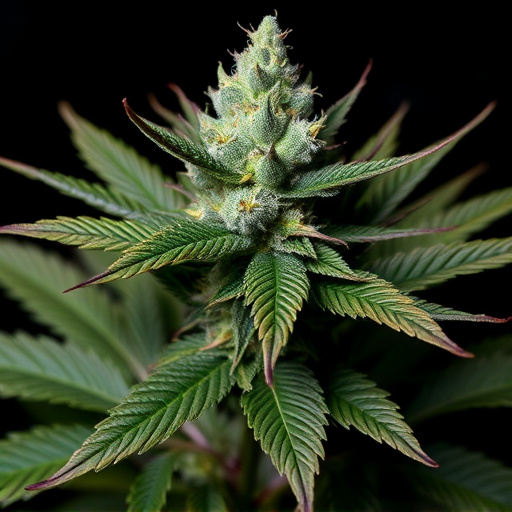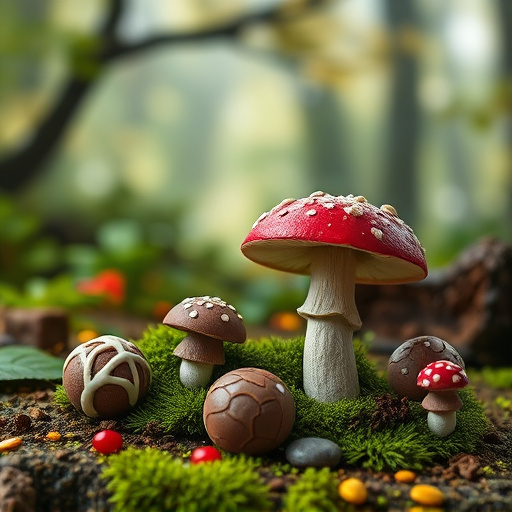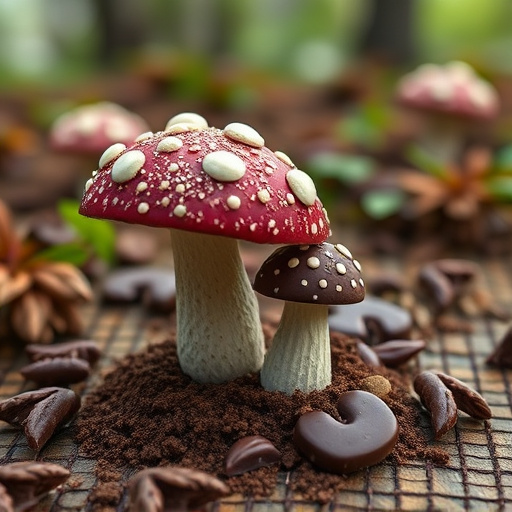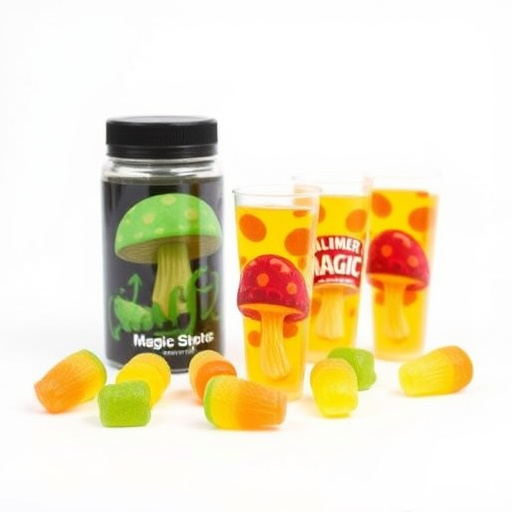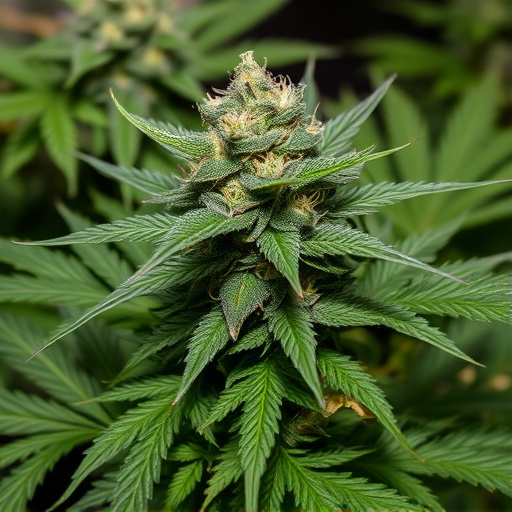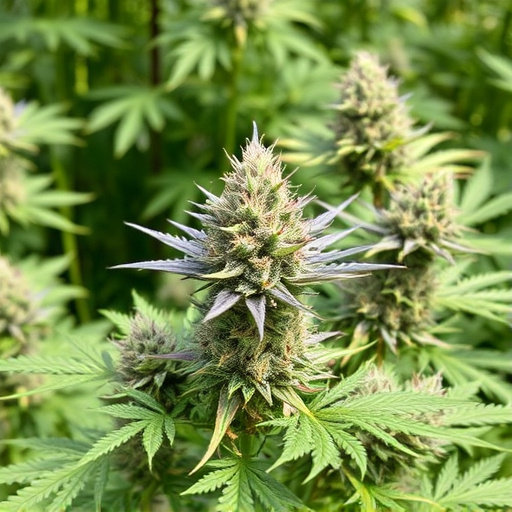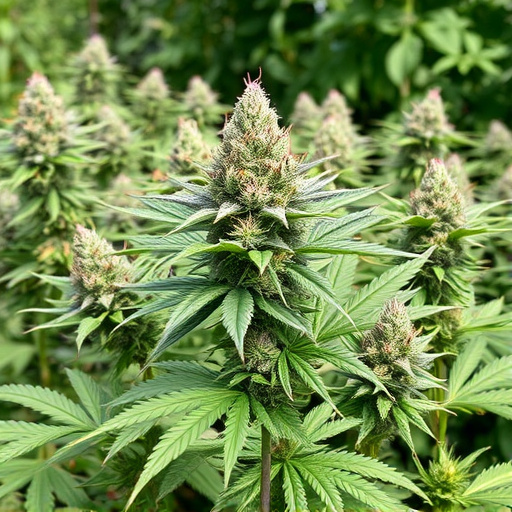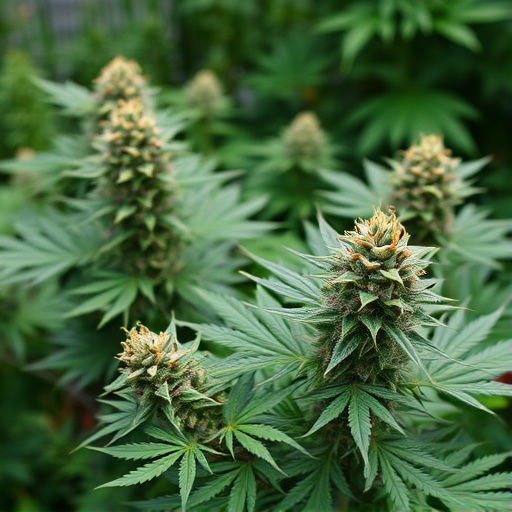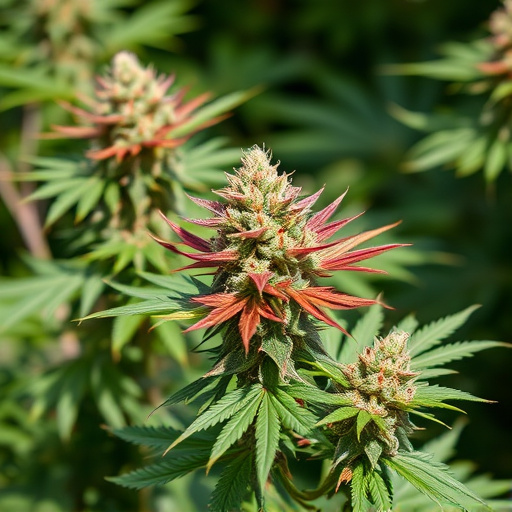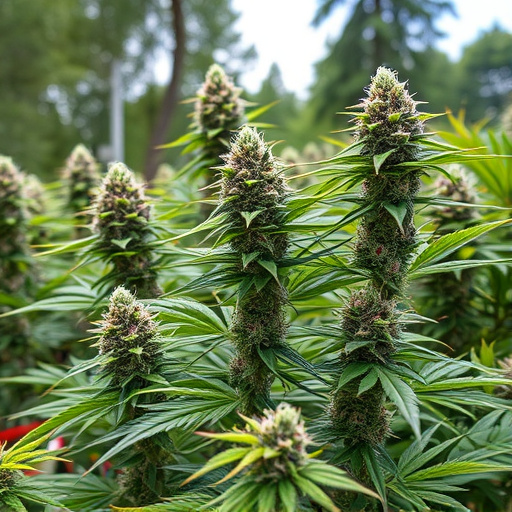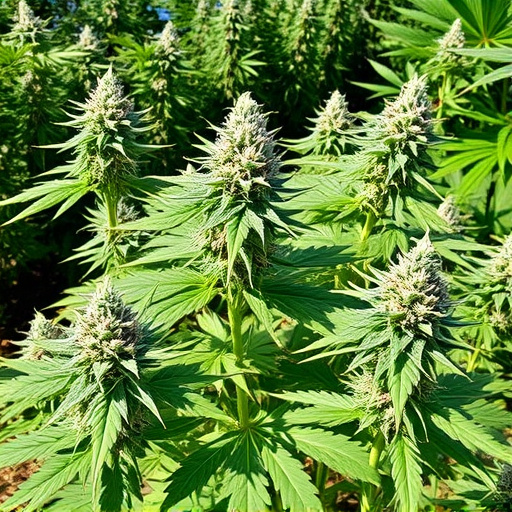Outdoor cannabis strains display a captivating array of colors, driven by complex interactions between light and pigments in their cells. Key pigments like chlorophyll, anthocyanins, and carotenoids absorb specific light wavelengths, resulting in hues ranging from vibrant purples and reds to oranges and yellows. High concentrations of anthocyanins, influenced by genetic traits and environmental factors such as cold temperatures, produce striking colors. This natural process fascinates botanists and cultivators who selectively breed outdoor cannabis strains for both their visual allure and potential therapeutic benefits.
“Discover the captivating mysteries behind the vibrant hues of outdoor cannabis strains. In this comprehensive guide, we unravel the causes of purple, red, and blue weed, delving into the intricate science of plant pigmentation. Explore how environmental factors shape these unique colors, from the genetic makeup of strains to the impact of sunlight and temperature. Understand the allure of outdoor cannabis, where nature’s elements create a tapestry of visually stunning and potentially potent variations.”
- Understanding Pigmentation in Plants: The Science Behind Coloration
- Outdoor Environmental Factors: How They Influence Cannabis Strain Colors
- Uncovering the Genetic Origins of Purple, Red, and Blue Tints in Outdoor Cannabis Strains
Understanding Pigmentation in Plants: The Science Behind Coloration

Plants, including outdoor cannabis strains, display a remarkable array of colors, with purple, red, and blue being particularly striking. Understanding the science behind this pigmentation is key to unlocking the secrets of these captivating outdoor cannabis varieties. At its core, plant coloration results from the interaction between light and pigments present in the plant’s cells. These pigments, such as chlorophyll (responsible for green leaves), anthocyanins (reds and purples), and carotenoids (oranges and yellows), absorb specific wavelengths of light while reflecting others, ultimately dictating the final color we perceive.
The unique combinations and concentrations of these pigments contribute to the diverse colors seen in outdoor cannabis strains. For instance, high levels of anthocyanins can lead to vibrant purples and reds, often associated with certain genetic traits or environmental stimuli like cold temperatures. This natural process not only fascinates botanists but also captivates cultivators who selectively breed plants for their visual appeal and potential therapeutic benefits.
Outdoor Environmental Factors: How They Influence Cannabis Strain Colors
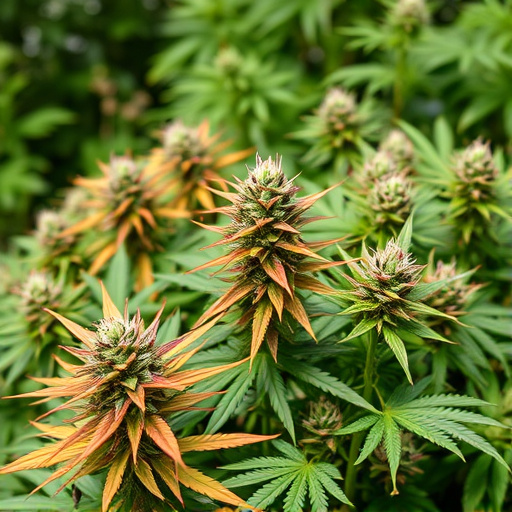
The colors of outdoor cannabis strains are significantly influenced by various environmental factors. Sunlight, for instance, plays a pivotal role in the production of anthocyanins, pigments responsible for shades of red, blue, and purple. Adequate sunlight exposure during specific growth phases can lead to more vibrant and diverse colors in these strains. Temperature also acts as a crucial regulator; cooler temperatures tend to intensify anthocyanin production, resulting in richer purples and reds.
Additionally, soil composition and nutrient availability contribute to color variations. Strains grown in soils rich in certain minerals may exhibit bolder hues due to the interaction of sunlight and these elements. Outdoor conditions like rainfall patterns and humidity levels can also indirectly affect pigment expression, ensuring that cannabis flowers display a wide array of colors, making outdoor cannabis strains particularly captivating and diverse.
Uncovering the Genetic Origins of Purple, Red, and Blue Tints in Outdoor Cannabis Strains
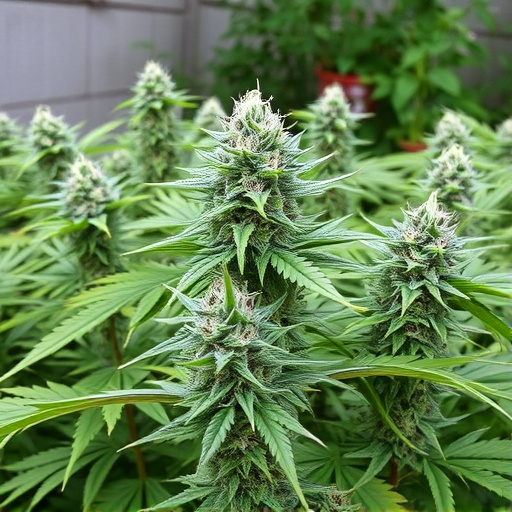
The vibrant purple, red, and blue hues often seen in outdoor cannabis strains aren’t mere coincidences; they’re a result of genetic alterations that have occurred over time. These colors are caused by specific pigments known as anthocyanins, which are produced when certain genes express themselves. In outdoor environments, where cannabis plants face varying light conditions, temperature fluctuations, and nutrient availability, natural selection plays a significant role in the expression of these genetic variations.
Genetic diversity within cannabis populations allows for the emergence of rare traits, including altered pigment production. Environmental stressors can trigger specific genes responsible for anthocyanin synthesis, leading to the development of striking red, purple, or blue shades. This adaptation is not only visually captivating but also serves as a survival mechanism, helping plants absorb more light and protect themselves from harsh conditions. Understanding these genetic origins provides valuable insights into the cultivation and breeding of outdoor cannabis strains, allowing enthusiasts and growers to appreciate and harness the unique characteristics that nature has gifted this remarkable plant with.
The captivating colors of purple, red, and blue in outdoor cannabis strains are not merely aesthetic; they are the result of a complex interplay between plant pigmentation science, environmental factors, and genetic mutations. By understanding these causes, growers can better appreciate and cultivate these visually stunning strains. The unique genetic makeup and external conditions create an environment where specific pigments, such as anthocyanins, thrive, giving rise to the vibrant hues that have captivated both scientists and cannabis enthusiasts alike.
